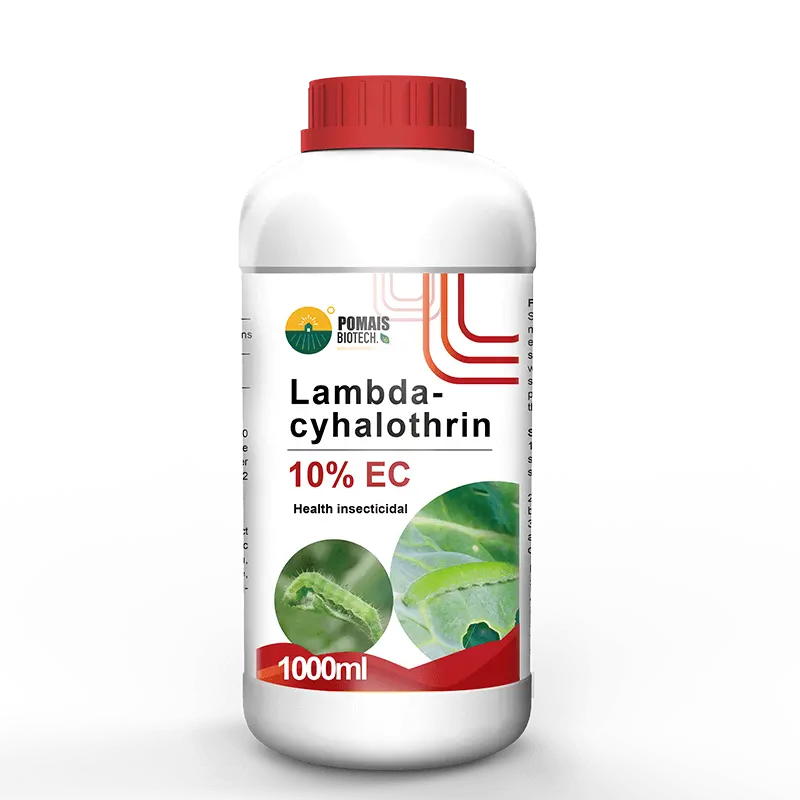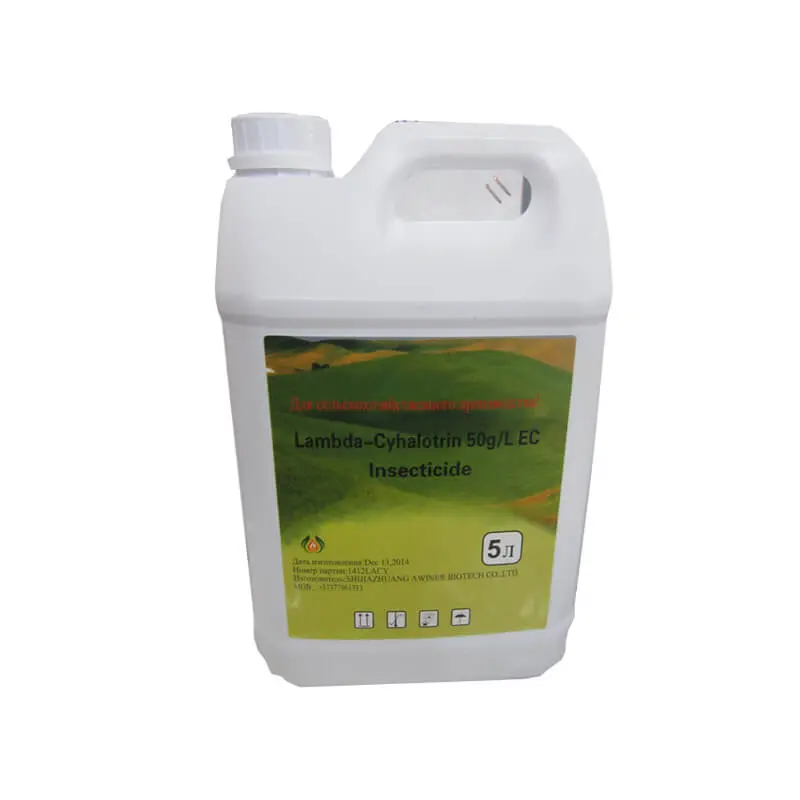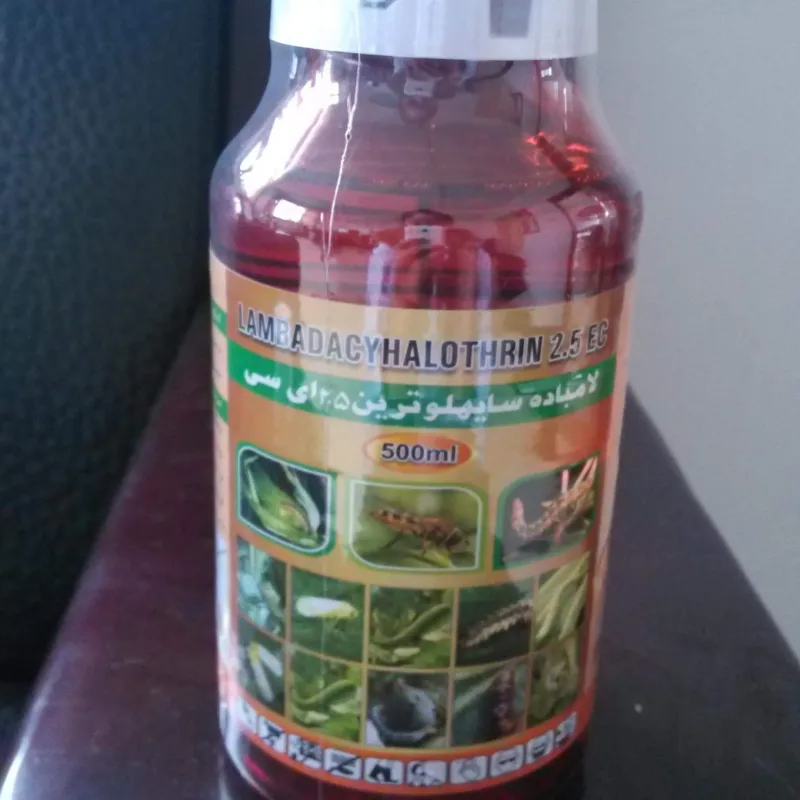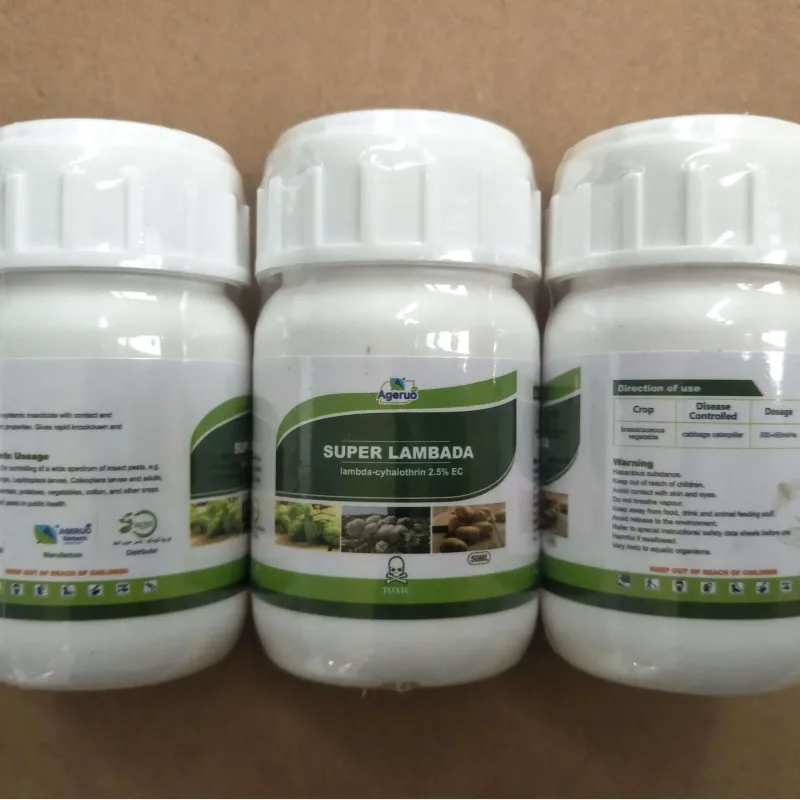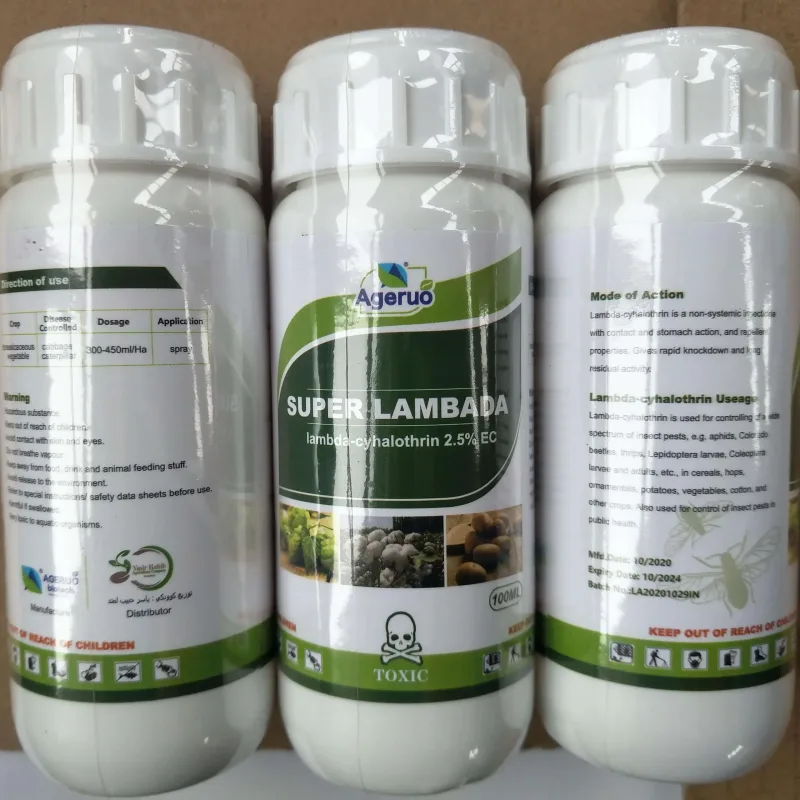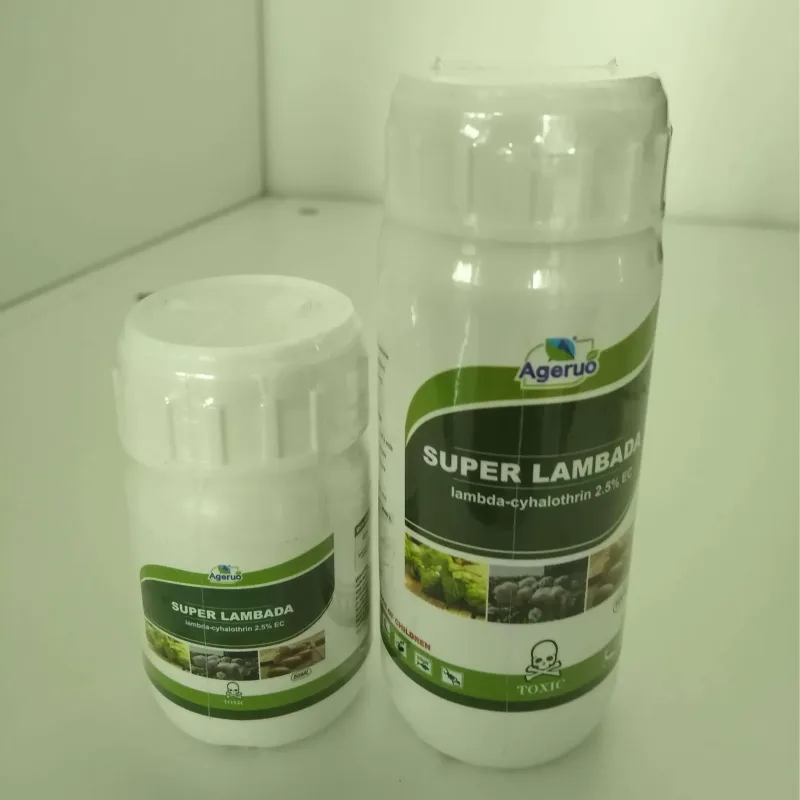Is Lambda-Cyhalothrin Safe for Pets?
Lambda-cyhalothrin is a widely used pesticide that belongs to the class of pyrethroids, which are synthetic insecticides designed to control pests on both agricultural crops and in domestic environments. While effective in pest control, many pet owners and gardeners often wonder: is lambda-cyhalothrin safe for pets, including dogs, cats, and even bees? In this article, we address the safety concerns of using lambda-cyhalothrin around pets and provide important guidelines to ensure its safe application.
Lambda-Cyhalothrin and Pets: What You Need to Know
Lambda-cyhalothrin is commonly used in agricultural settings, such as on food crops, as well as in residential areas for controlling pests like ants, fleas, ticks, and mosquitoes. However, its use can pose risks to pets, especially if not applied properly. Let’s break down the safety concerns associated with lambda-cyhalothrin for your pets:
Is Lambda-Cyhalothrin Toxic to Cats?
Lambda-cyhalothrin can be toxic to cats if ingested, inhaled, or absorbed through the skin. Cats have a heightened sensitivity to pyrethroids, and exposure may cause symptoms like drooling, tremors, vomiting, and difficulty breathing. It is essential to keep cats away from treated areas until the pesticide has completely dried and the area is safe to reenter.
Is Lambda-Cyhalothrin Toxic to Dogs?
While lambda-cyhalothrin is generally considered safer for dogs compared to cats, it can still be harmful if they come into direct contact with treated surfaces, especially if they lick the chemical off their fur or paws. Dogs exposed to the pesticide may experience signs like drooling, vomiting, lethargy, and muscle tremors. Small dogs or those with existing health issues are particularly at risk. To be on the safe side, always keep pets away from freshly treated areas and avoid direct exposure.
Is Lambda-Cyhalothrin Safe for Pets?
When applied according to manufacturer instructions, lambda-cyhalothrin can be safe for pets. However, always ensure pets are kept out of treated areas until the pesticide has dried or been absorbed. Be cautious of drift when spraying, especially if you have outdoor animals or livestock. Pet owners should also avoid direct contact with freshly treated areas to minimize the risk of exposure.
Is Lambda-Cyhalothrin Safe for Bees?
Unfortunately, lambda-cyhalothrin is toxic to bees and other beneficial insects. If you are treating areas where pollinators like bees are active, it’s crucial to apply the pesticide during times when bees are not foraging, such as early morning or late evening. Always follow label instructions to minimize impact on local ecosystems.
Is Lambda-Cyhalothrin Safe for Vegetable Gardens?
While lambda-cyhalothrin is effective in controlling pests on a wide range of crops, it should be used with caution in vegetable gardens. To reduce pesticide residue on food crops, apply the insecticide at the recommended times and observe pre-harvest intervals. Always check the product label for specific guidelines on usage for edible plants to ensure safety.
How Does Lambda-Cyhalothrin Work?
Lambda-cyhalothrin works by affecting the nervous system of insects. It interferes with the transmission of nerve impulses by binding to sodium channels, causing continuous nerve activity, paralysis, and ultimately death in pests. It is a contact insecticide, meaning it kills insects through direct contact with the treated area. However, it is important to note that lambda-cyhalothrin is not systemic, meaning it does not get absorbed into the plant or soil but stays localized on the surface where it’s applied.
How Long Does Lambda-Cyhalothrin Last?
The residual activity of lambda-cyhalothrin can vary depending on environmental conditions such as temperature, humidity, and rainfall. Typically, the pesticide remains effective for 1-2 weeks after application. However, frequent rainfall or irrigation can reduce its efficacy. It’s important to reapply as needed and follow the product label for specific timing.
Lambda-Cyhalothrin FAQ
- What is Lambda-Cyhalothrin Used For?
- Lambda-cyhalothrin is used primarily for controlling a broad spectrum of pests, including mosquitoes, ants, fleas, ticks, and various agricultural pests. It is commonly applied to lawns, vegetable gardens, and crops to protect against insect infestations.
- How Does Lambda-Cyhalothrin Work?
- As a pyrethroid insecticide, lambda-cyhalothrin works by affecting the insect’s nervous system. It causes an overload of nerve activity, leading to paralysis and death of the insect. It is effective on contact but does not have systemic properties.
- How Long Does Lambda-Cyhalothrin Last?
- Lambda-cyhalothrin typically lasts 1-2 weeks depending on environmental factors. Reapplication may be necessary in areas of heavy pest activity or after rainfall.
- Is Lambda-Cyhalothrin a Repellent?
- No, lambda-cyhalothrin is not a repellent; it is a contact insecticide that kills pests on contact.
- Is Lambda-Cyhalothrin Systemic?
- No, lambda-cyhalothrin is not systemic; it only affects pests that come into direct contact with the treated surface.
- What Are Lambda-Cyhalothrin’s Uses in Agriculture?
- In agriculture, lambda-cyhalothrin is used to protect crops from a variety of pests, including aphids, leafhoppers, and caterpillars, among others. It is widely applied to vegetable crops, fruits, and grain crops.
- Is Lambda-Cyhalothrin Used on Food Crops?
- Lambda-cyhalothrin is commonly used on food crops like fruits, vegetables, and grains to control pests.
Lambda-cyhalothrin is a widely used pesticide that belongs to the class of pyrethroids, which are synthetic insecticides designed to control pests on both agricultural crops and in domestic environments. While effective in pest control, many pet owners and gardeners often wonder: is lambda-cyhalothrin safe for pets, including dogs, cats, and even bees? In this article, we address the safety concerns of using lambda-cyhalothrin around pets and provide important guidelines to ensure its safe application.
Lambda-Cyhalothrin and Pets: What You Need to Know
Lambda-cyhalothrin is commonly used in agricultural settings, such as on food crops, as well as in residential areas for controlling pests like ants, fleas, ticks, and mosquitoes. However, its use can pose risks to pets, especially if not applied properly. Let’s break down the safety concerns associated with lambda-cyhalothrin for your pets:
Is Lambda-Cyhalothrin Toxic to Cats?
Lambda-cyhalothrin can be toxic to cats if ingested, inhaled, or absorbed through the skin. Cats have a heightened sensitivity to pyrethroids, and exposure may cause symptoms like drooling, tremors, vomiting, and difficulty breathing. It is essential to keep cats away from treated areas until the pesticide has completely dried and the area is safe to reenter.
Is Lambda-Cyhalothrin Toxic to Dogs?
While lambda-cyhalothrin is generally considered safer for dogs compared to cats, it can still be harmful if they come into direct contact with treated surfaces, especially if they lick the chemical off their fur or paws. Dogs exposed to the pesticide may experience signs like drooling, vomiting, lethargy, and muscle tremors. Small dogs or those with existing health issues are particularly at risk. To be on the safe side, always keep pets away from freshly treated areas and avoid direct exposure.
Is Lambda-Cyhalothrin Safe for Pets?
When applied according to manufacturer instructions, lambda-cyhalothrin can be safe for pets. However, always ensure pets are kept out of treated areas until the pesticide has dried or been absorbed. Be cautious of drift when spraying, especially if you have outdoor animals or livestock. Pet owners should also avoid direct contact with freshly treated areas to minimize the risk of exposure.
Is Lambda-Cyhalothrin Safe for Bees?
Unfortunately, lambda-cyhalothrin is toxic to bees and other beneficial insects. If you are treating areas where pollinators like bees are active, it’s crucial to apply the pesticide during times when bees are not foraging, such as early morning or late evening. Always follow label instructions to minimize impact on local ecosystems.
Is Lambda-Cyhalothrin Safe for Vegetable Gardens?
While lambda-cyhalothrin is effective in controlling pests on a wide range of crops, it should be used with caution in vegetable gardens. To reduce pesticide residue on food crops, apply the insecticide at the recommended times and observe pre-harvest intervals. Always check the product label for specific guidelines on usage for edible plants to ensure safety.
How Does Lambda-Cyhalothrin Work?
Lambda-cyhalothrin works by affecting the nervous system of insects. It interferes with the transmission of nerve impulses by binding to sodium channels, causing continuous nerve activity, paralysis, and ultimately death in pests. It is a contact insecticide, meaning it kills insects through direct contact with the treated area. However, it is important to note that lambda-cyhalothrin is not systemic, meaning it does not get absorbed into the plant or soil but stays localized on the surface where it’s applied.
How Long Does Lambda-Cyhalothrin Last?
The residual activity of lambda-cyhalothrin can vary depending on environmental conditions such as temperature, humidity, and rainfall. Typically, the pesticide remains effective for 1-2 weeks after application. However, frequent rainfall or irrigation can reduce its efficacy. It’s important to reapply as needed and follow the product label for specific timing.
Lambda-Cyhalothrin FAQ
- What is Lambda-Cyhalothrin Used For?
- Lambda-cyhalothrin is used primarily for controlling a broad spectrum of pests, including mosquitoes, ants, fleas, ticks, and various agricultural pests. It is commonly applied to lawns, vegetable gardens, and crops to protect against insect infestations.
- How Does Lambda-Cyhalothrin Work?
- As a pyrethroid insecticide, lambda-cyhalothrin works by affecting the insect’s nervous system. It causes an overload of nerve activity, leading to paralysis and death of the insect. It is effective on contact but does not have systemic properties.
- How Long Does Lambda-Cyhalothrin Last?
- Lambda-cyhalothrin typically lasts 1-2 weeks depending on environmental factors. Reapplication may be necessary in areas of heavy pest activity or after rainfall.
- Is Lambda-Cyhalothrin a Repellent?
- No, lambda-cyhalothrin is not a repellent; it is a contact insecticide that kills pests on contact.
- Is Lambda-Cyhalothrin Systemic?
- No, lambda-cyhalothrin is not systemic; it only affects pests that come into direct contact with the treated surface.
- What Are Lambda-Cyhalothrin’s Uses in Agriculture?
- In agriculture, lambda-cyhalothrin is used to protect crops from a variety of pests, including aphids, leafhoppers, and caterpillars, among others. It is widely applied to vegetable crops, fruits, and grain crops.
- Is Lambda-Cyhalothrin Used on Food Crops?
- Lambda-cyhalothrin is commonly used on food crops like fruits, vegetables, and grains to control pests.


